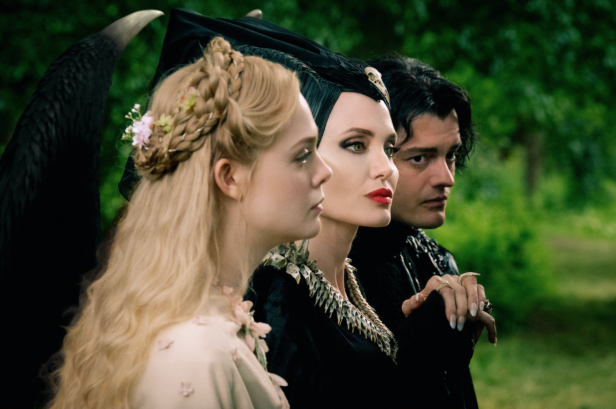Maleficent: Mistress Of Evil’s opening narration unashamedly admits to its audience that they’ve heard its story before — one that sees the eponymous figure deemed a villain, only to discover that true events say otherwise. It’s a fair observation, given that its predecessor positioned the dark faery as a baddie driven to evil by wretched humans wronging her. But this goes even further with that controversial concept, retconning Sleeping Beauty and making her an out-and-out hero.
Set five years after Maleficent (Jolie) restored the enchanted Moors to their former glory and crowned Aurora (Fanning) as queen, it centres on the impending nuptials between the latter and Prince Phillip (Dickinson). The young lovers believe that their marriage will unite their kingdoms but Maleficent and Phillip’s mother Queen Ingrith (Pfeiffer) — who has her own complicated history with peace treaties — aren’t as hopeful. An alliance becomes even more unlikely too, when a celebratory dinner ends in tragedy, Aurora is torn between her new family and the woman who raised her and Ingrith’s wicked schemes are exposed.
Abandoning Robert Stromberg’s more serious tone, new director Joachim Rønning opts for a sillier, more exaggerated tale this time round. Early on in the film, the humour lands often – like when shapeshifter Diaval tells Maleficent to “try it with a bit less fang” as she practices greeting Phillip’s parents – but as the stakes get higher and dark themes of intolerance, and even genocide, are explored, the campness of characters such as Ingrith and her crazy-eyed henchwoman grates uncomfortably.
Pfeiffer and Jolie are electric when they’re together though, as they spit venom and flash sinister smiles at one another in petulant powerplay. It’s just a shame they’re separate for the most part, and it’s the former who gets the most screen time otherwise. Even in her subplot, where she discovers she’s not the last of her kind, Maleficent is eclipsed by Ejiofor’s gentle Conall and Skrein’s warmongering Borra – a baffling choice considering how much the film revolves around her allegiances and morality, and how well Jolie could have portrayed that escalating inner conflict.
Elsewhere, Aurora fares well as the writers continue to give her more agency than in the 1959 classic, and Fanning imbues her with warmth and light. The visuals are impressive too – from gorgeous glimpses of the magical Moors to its gothic and ornate costumes – as is its action-packed third act that’s matches the thrills of the animation’s epic battle. How it further alters certain aspects of the cartoon won’t go down well with diehard Disney fans, but there’s something to be said for its boldness and if regarded as a standalone piece, it’s much like its protagonist… more good than bad.

